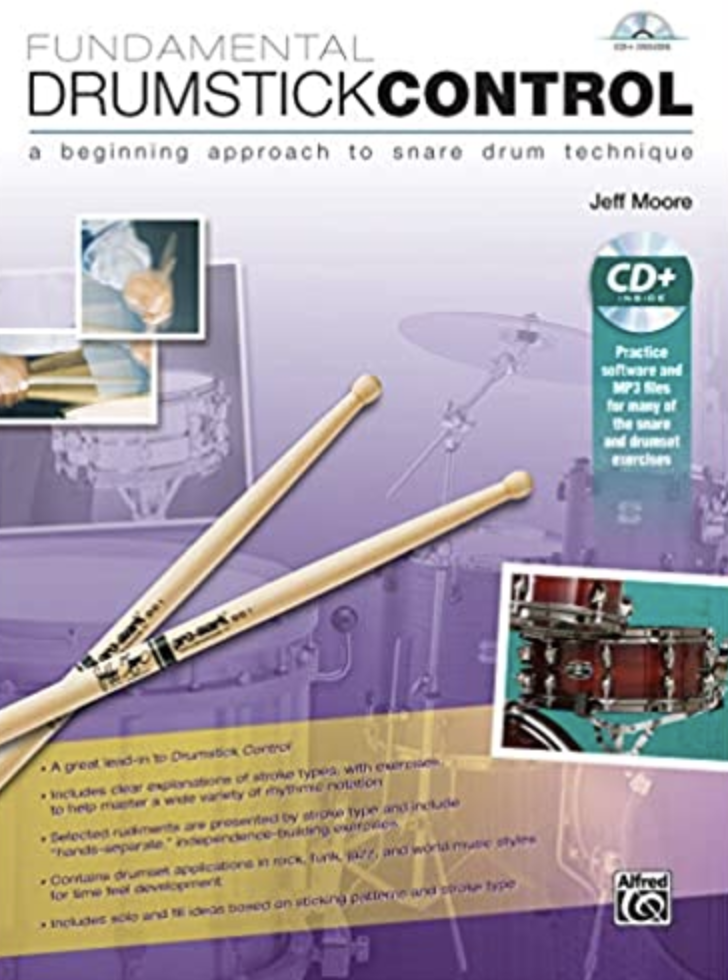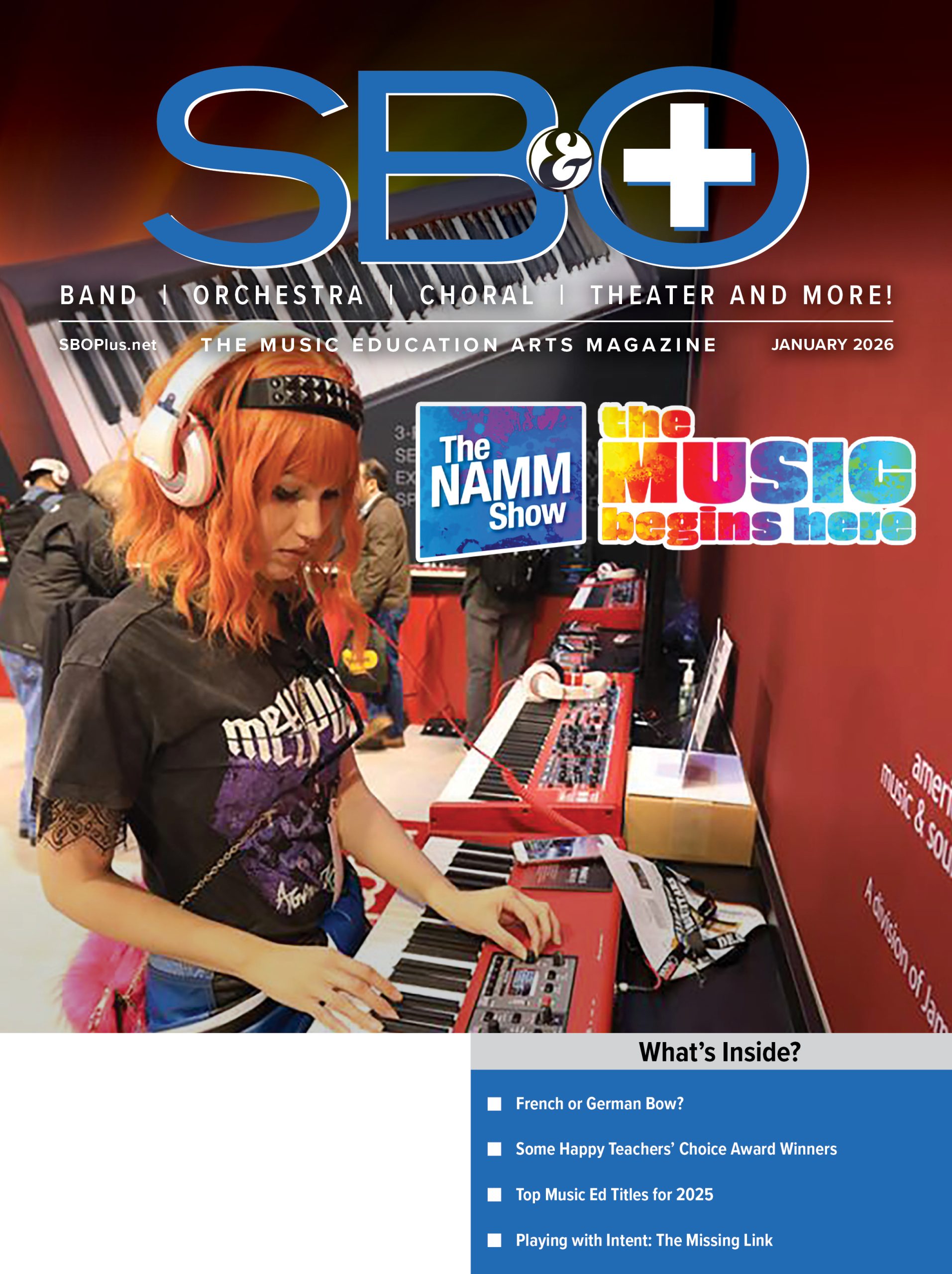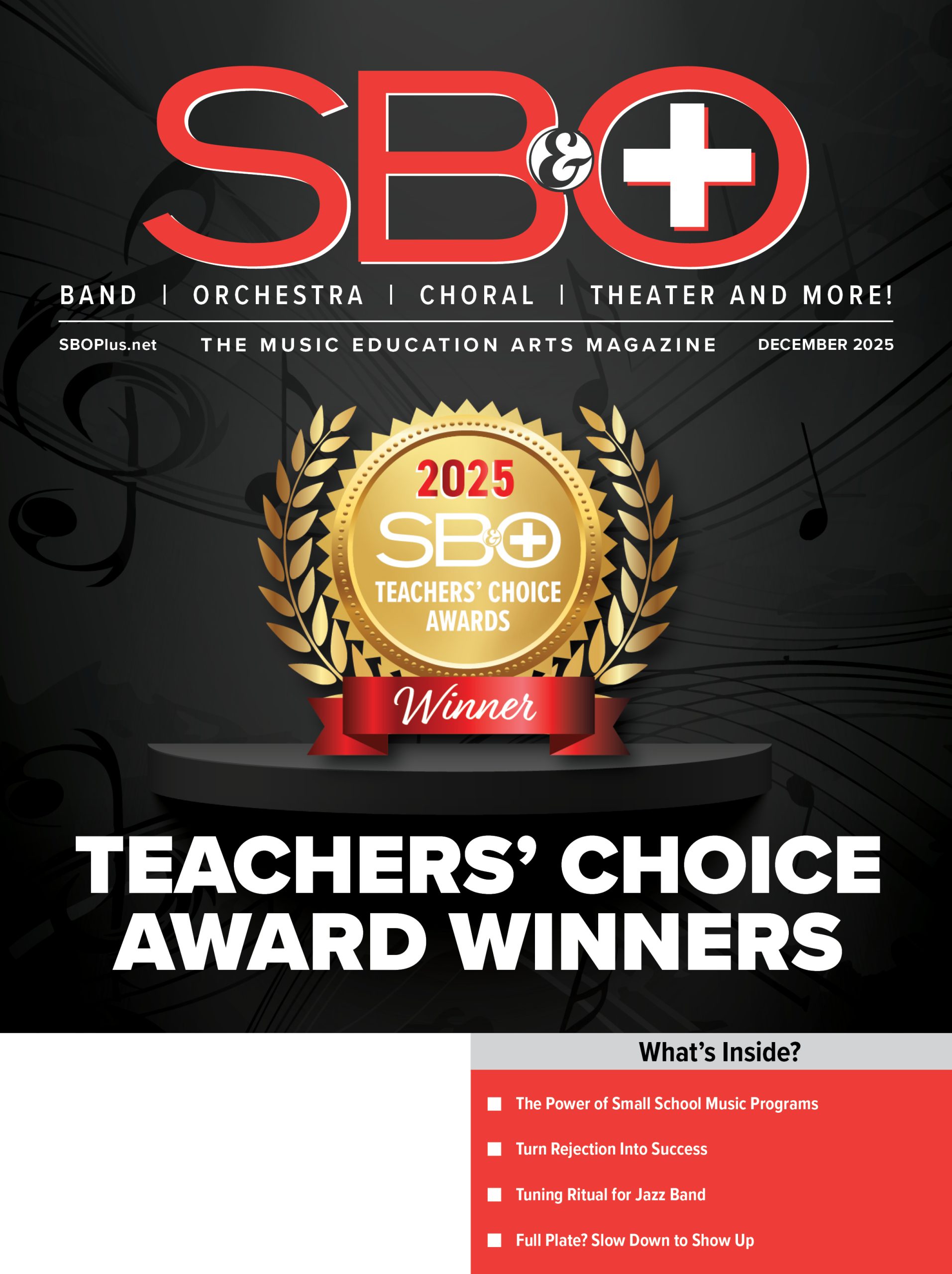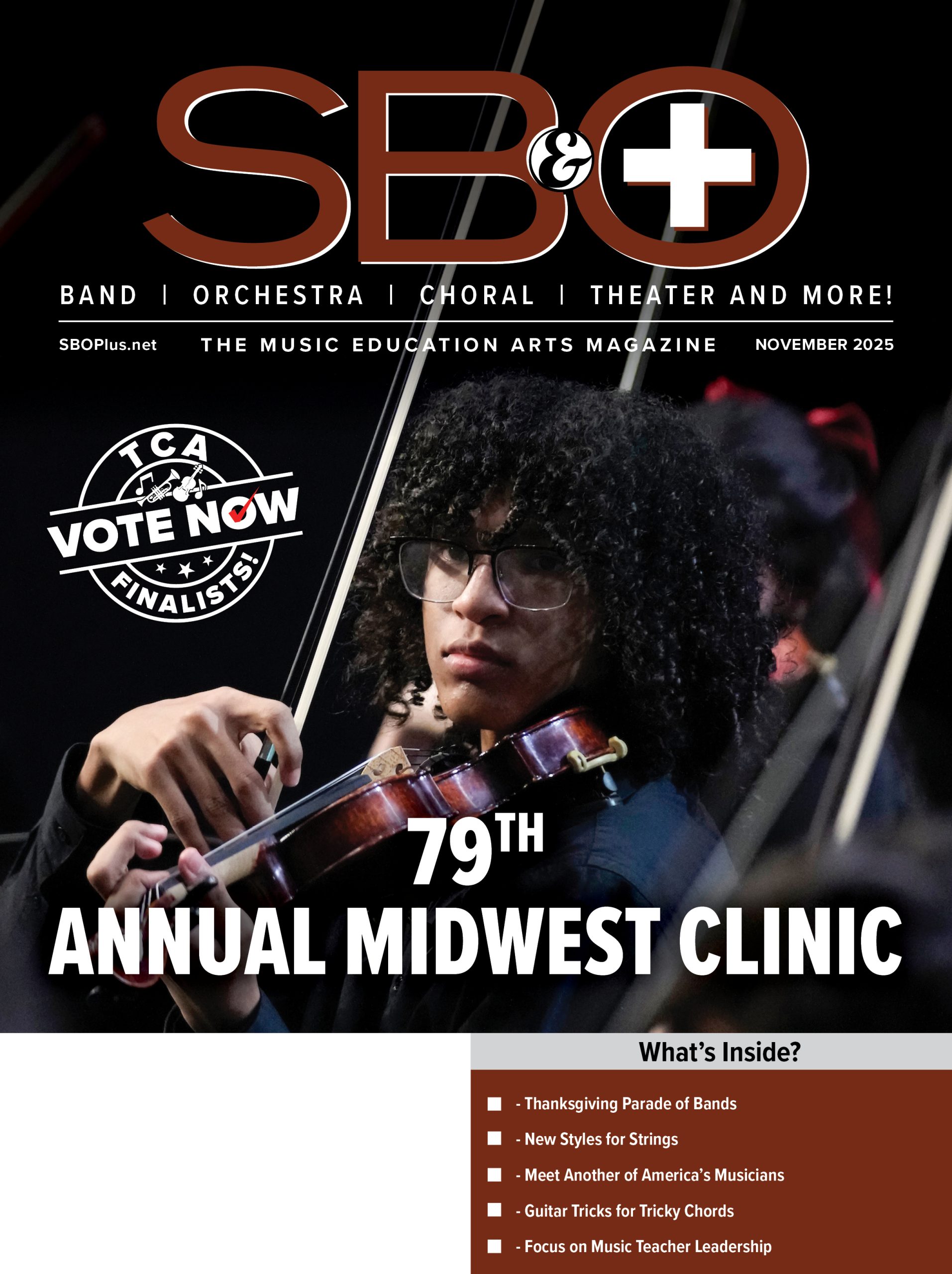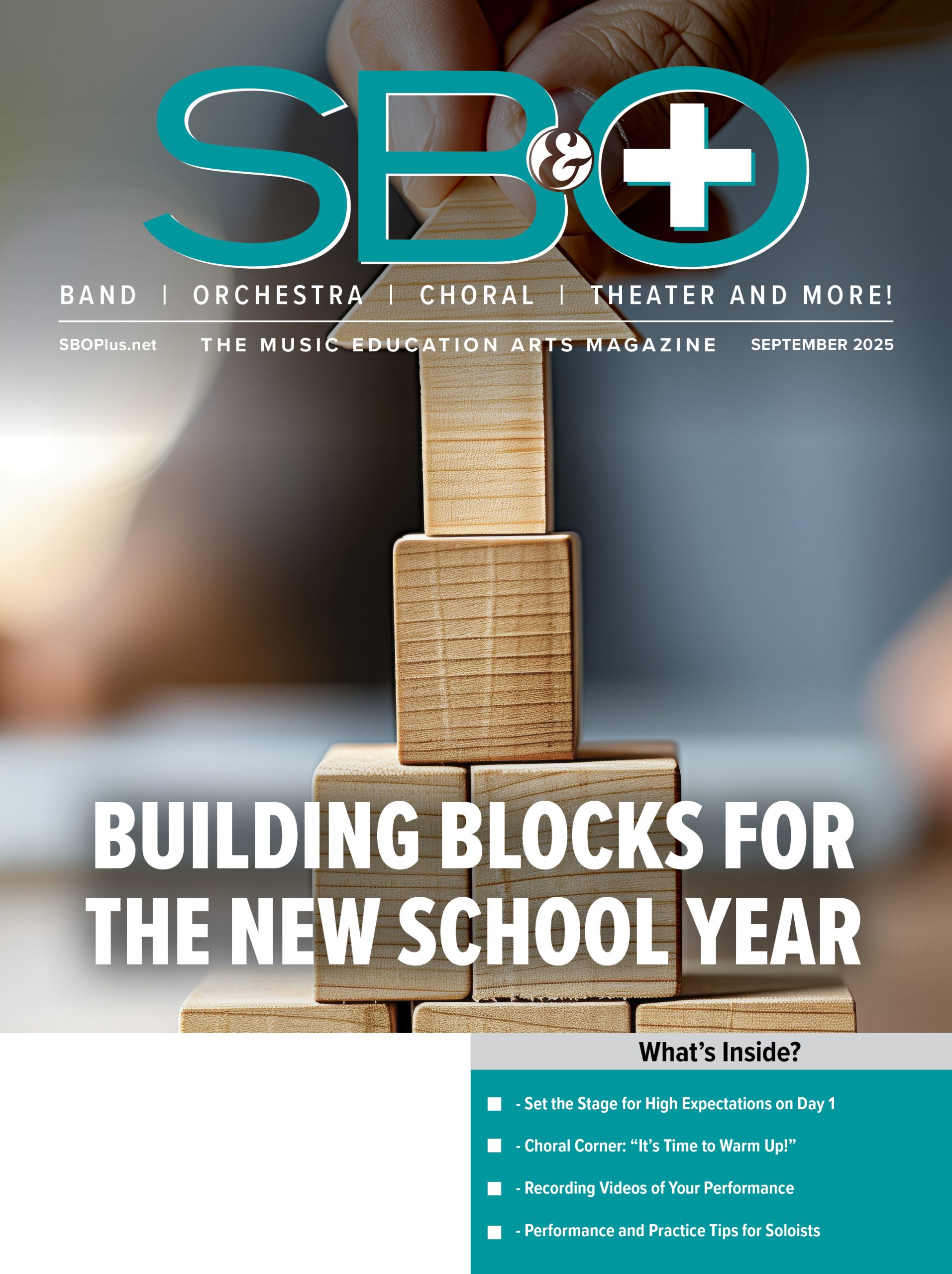
As marching season approaches, it is very important to have a good grasp on the basics of marching snare drum technique. I am going to go over some of the fundamentals that will help your snare line this marching season.
Before your students even begin to march, learning stick control on the snare drum should be the first priority. This encompasses several factors. One factor is stick placement. Your student should be able to play in the middle of the head in an area the size of a quarter. The sticks should not wander as they are playing with more complexity. Being able to play rudiments and exercises in a disciplined area on the head is critical to basic technique. Your students should also have control of the fulcrum, with the thumb on the side of the stick and the index finger wrapped around it, and controlling the rebound of the head with the back three fingers.
There are times when your students will need to play near the edge or half way in between the edge and the center of the drum for different sound effects. But even so, the beads of the sticks should be confined to an area the size of a quarter regardless of where they are playing.
Learning and maintaining proper stick heights is also very important. Stick heights range from three inches to twelve inches. Three inches is for soft dynamic levels, and 12 inches is for more loud and aggressive playing. Six inches and nine inches are also common heights. Your students should know where their stick heights should be at every point in the music. These concepts should be taught in their exercise book.
Regardless of which stick height is being used at any given moment, a very important concept regarding sound quality needs to be taught. Your students need to play with “weight.” This means that they are applying a little bit of weight into each stroke in order to bring out the full tone of the drum, even at the softest playing levels and smaller stick heights. I often tell my students to “play through the head.” I use an analogy so that they will understand. I tell them to pretend like they are hitting an imaginary drum head which is actually two inches lower than the one they are actually hitting. This seems to be a great way to fortify this concept inside their minds.
Another concept they need to master is accent and tap patterns. An accent is essentially made by the non-accented notes being at three inches, or even one inch, depending on the musical passage. The accented notes can be at nine inches and the unaccented not can be at three inches. Keeping the non-accented notes low is crucial for the accents being heard. There is no need to play “hard.” As long as the student maintains proper stick heights and “plays through the head,” the accents will naturally come out.
An absolutely crucial element to marching percussion is living and sleeping with a metronome. The snare drummers should always have a metronome playing through a sound system when they rehearse. This will fortify timing within the line and help them interpret rhythms correctly. Setting the metronome at various tempos, starting from very slow to fast, is a great way to rehearse both the exercises and marching music. Playing slow is actually more difficult and this should be mastered before fast tempos. Slower playing requires extreme accuracy of rhythms and timing because there is much more space in between each note.
Developing smooth open rolls is also extremely critical to having a successful snare line. I often tell my students that they are never playing rolls, unless it is a buzz roll. They are always playing sixteenth notes, 24th notes, or 32nd notes in different patterns whether they are double stroked or single stroked, or other more complex sticking patterns. Playing 16th notes or 32nd notes with a double stroke pattern should be accomplished with the mindset that every note has to sound “even” and “executed.” I often have my students play one measure of 16th notes single stroked, and then the next measure is double stroked. There should be absolutely no change in timing and the 16th notes should sound seamless and smooth with the metronome going from single stroke to double stroke. They should do the same thing with 32nd notes and 24th notes (triplet patterns). It can be very fun applying this concept of uniform rhythms in a triplet 24th note pattern. Singling out triplets and doubling them in the next measure, with no change of timing or evenness of the notes, can be a very fun exercise. The notes should sound exactly the same whether they are singled or doubled, besides for the different tambour of the stroke patterns being used.
I have a very strict rule for my students. No music is to ever be looked at on the marching field with the exception of checking marked drill sets and breaks in the music. I ask them to leave rehearsal if they are reading music during drill practice. Educators have to have absolutely zero tolerance for this undisciplined behavior in order to operate a smooth program. Music is to always be memorized before they hit the field. I will not allow my students on the marching field unless they can play the entire show or number being rehearsed for me that day by memory and without the music. I listen to them one at a time to receive clearance to go practice on the field with the band. This way they can focus on marching as well as the art form of marching with an ensemble.
Marching is another beast for percussionists, but as a rule they should always be “marking time” from the beginning of the year during both exercise and music rehearsal. This will fortify the timing of marching for them. Mastering the roll step so the feet and ankles absorb all of the movement is also extremely important during movement. This way the snare drum will not move at all when they are marching, which will greatly improve their musical performance. Having to play on a drum that is a moving target because of poor marching technique is an absolute nightmare.
When a snare line moves side to side, the crab step should also be rehearsed so the feet and ankles absorb all of the movement, which will create no motion from the waist up and a stable snare drum that does not move while the student marches and plays.
A wonderful book for snare drum control is Fundamental Drum Stick Control by Jeff Moore, who is the professor of percussion/dean of fine arts at University of Central Florida in Orlando, and former caption head of the Madison Scouts Drum and Bugle Corps when they were a powerhouse in the 1990s. The book may be found at Amazon and Steve Weiss Music.
